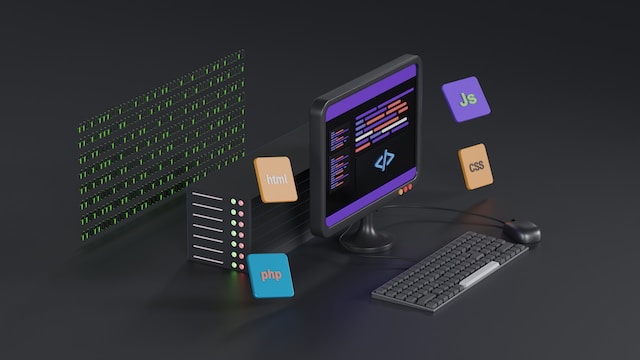User Experience Strategies for Designing User-Friendly Applications
over 1 year ago

. . .
User Research: Conduct thorough user research to gain insights into your target audience. Understand their needs, preferences, and pain points. This research will help inform the design decisions and ensure that the application meets user expectations.
User-Centered Design: Adopt a user-centered design approach, placing the needs and goals of the users at the forefront. Design the application around user workflows and tasks, making it easy for users to accomplish their goals efficiently.
Simple and Intuitive Interface: Simplicity is key to a user-friendly application. Strive for a clean and intuitive interface that allows users to navigate and interact with ease. Use familiar design patterns and clear visual cues to guide users through the application.
Consistency in Design: Maintain consistency in design elements such as colors, typography, and layout throughout the application. Consistency creates a sense of familiarity and helps users understand how to interact with different components.
Responsive Design: Ensure that your application is responsive and adapts seamlessly to different screen sizes and devices. This allows users to access and use the application across various platforms, enhancing usability.
Effective Information Architecture: Organize the information and content within the application in a logical and structured manner. Use clear navigation menus, categorize content, and provide search functionality to help users find what they need quickly.
Streamlined Workflows: Optimize user workflows by minimizing steps and reducing complexity. Identify and eliminate any unnecessary or redundant interactions, making the application more efficient and user-friendly.
Clear and Helpful Feedback: Provide clear feedback to users when they perform actions or encounter errors. Use visual cues, notifications, and error messages to guide users and help them understand the status and outcomes of their interactions.
Usability Testing and Iteration: Conduct usability testing throughout the design and development process. Gather feedback from real users and iterate on the design based on their insights. This iterative approach ensures continuous improvement and enhances the usability of the application.
Continuous Improvement: Monitor user feedback, analytics, and user behavior to identify areas for improvement. Regularly update and refine the application based on user needs and changing trends to ensure it remains user-friendly over time.
By implementing these UX strategies, you can create user-friendly applications that provide a seamless and enjoyable user experience. Prioritizing user needs, simplicity, consistency, and usability testing will result in applications that are intuitive, efficient, and highly engaging for your target audience.
Similar articles

Unveiling the Fundamentals of JavaScript Programming
JavaScript, the cornerstone of modern web development, has evolved from a simple scripting language to a versatile and powerful programming language. In this comprehensive guide, we'll delve into the fundamental aspects of JavaScript programming, providing both beginners and seasoned developers with a solid foundation.

I Bet You Don’t Use These JavaScript Tricks and Practices
Flat Map in javascript is a great technique which you can learn here. Flat map essentially conbines techniques of map and filter Array method into one. I will suggest you to use flatMap() over combination of filter() and map().

Artificial Intelligence Techniques and Their Applications in Programming
Artificial Intelligence (AI) is an advanced field of computer science that aims to create systems capable of performing tasks similar to human intelligence. Among the domains that have greatly benefited from advances in AI is the field of programming.

Developing Web Applications: From Basics to Best Practices
Developing web applications is a vital and evolving field in the realm of information technology. Web application development enables the creation of interactive and customizable experiences over the web, making it a fundamental tool for modern businesses. In this article, we will cover the basics and explore best practices in web application development.

How to choose the right programming language for your project
Choosing the right programming language for your project is a crucial decision that can greatly impact its success and efficiency. Here is an article explaining how to choose the appropriate programming language for your project: